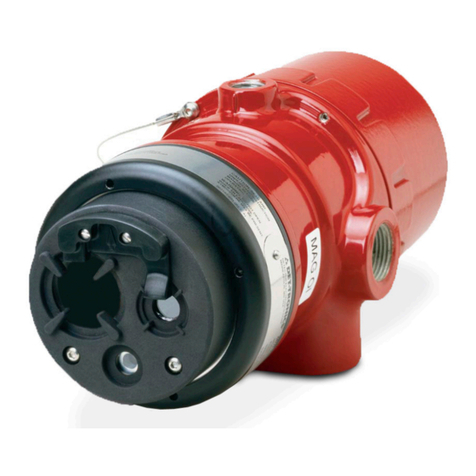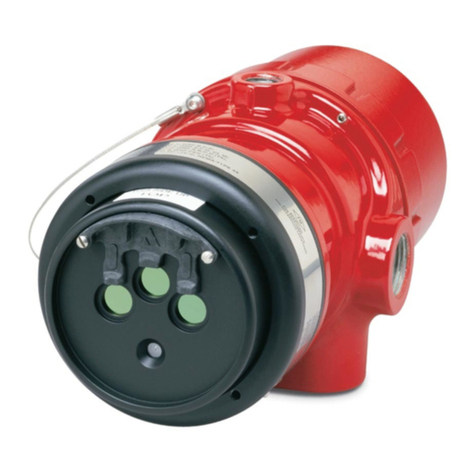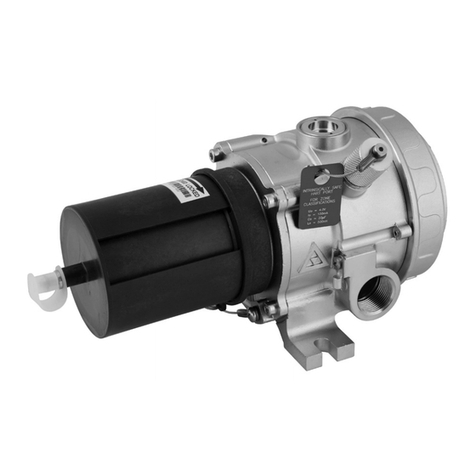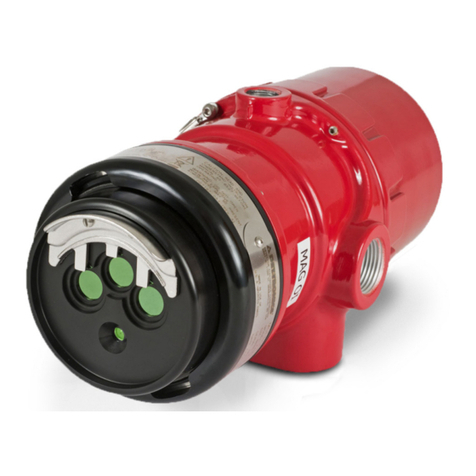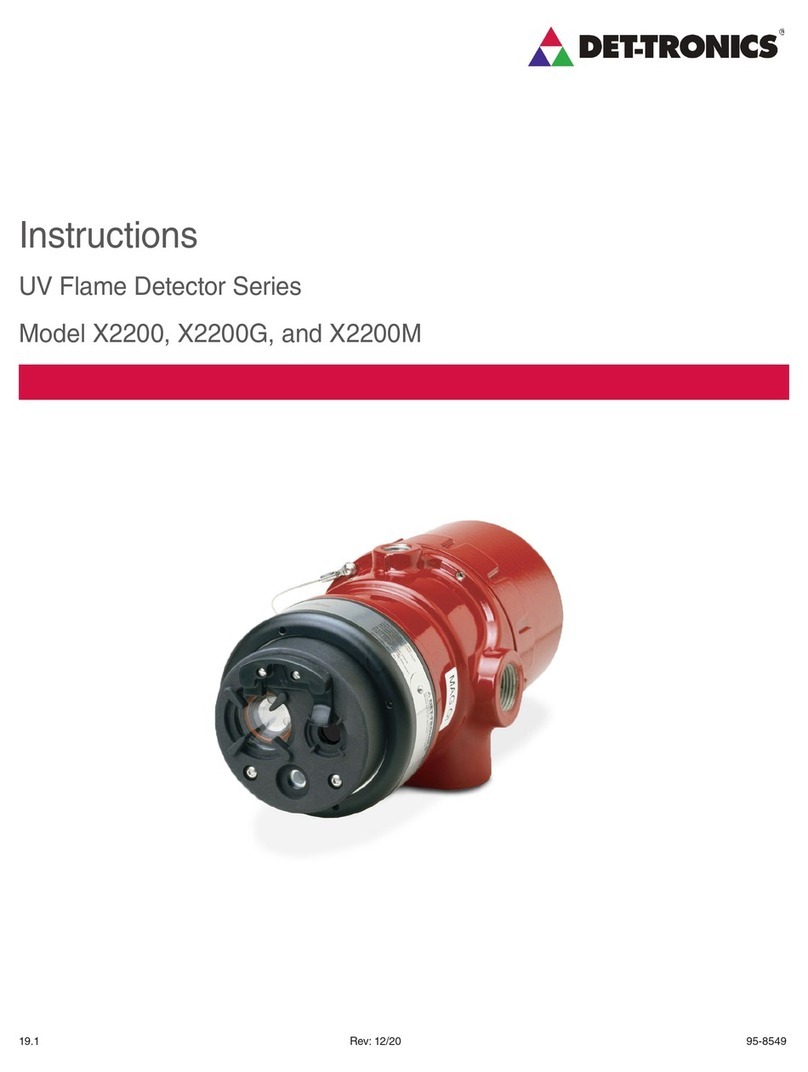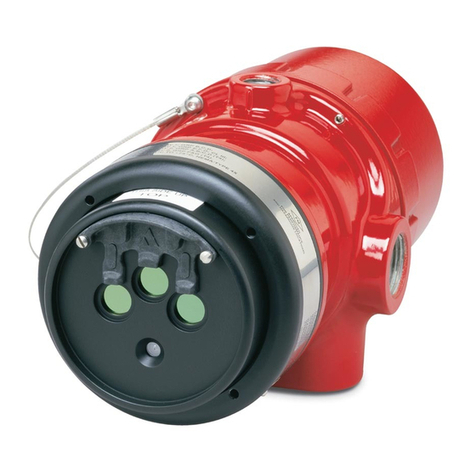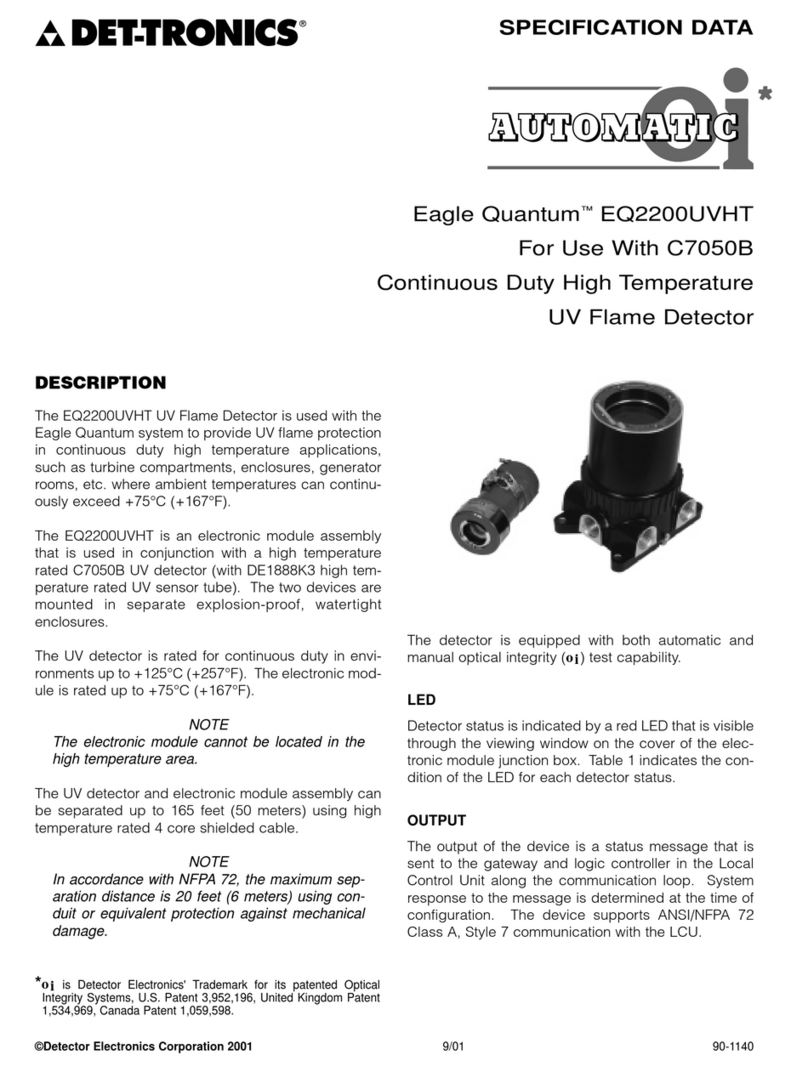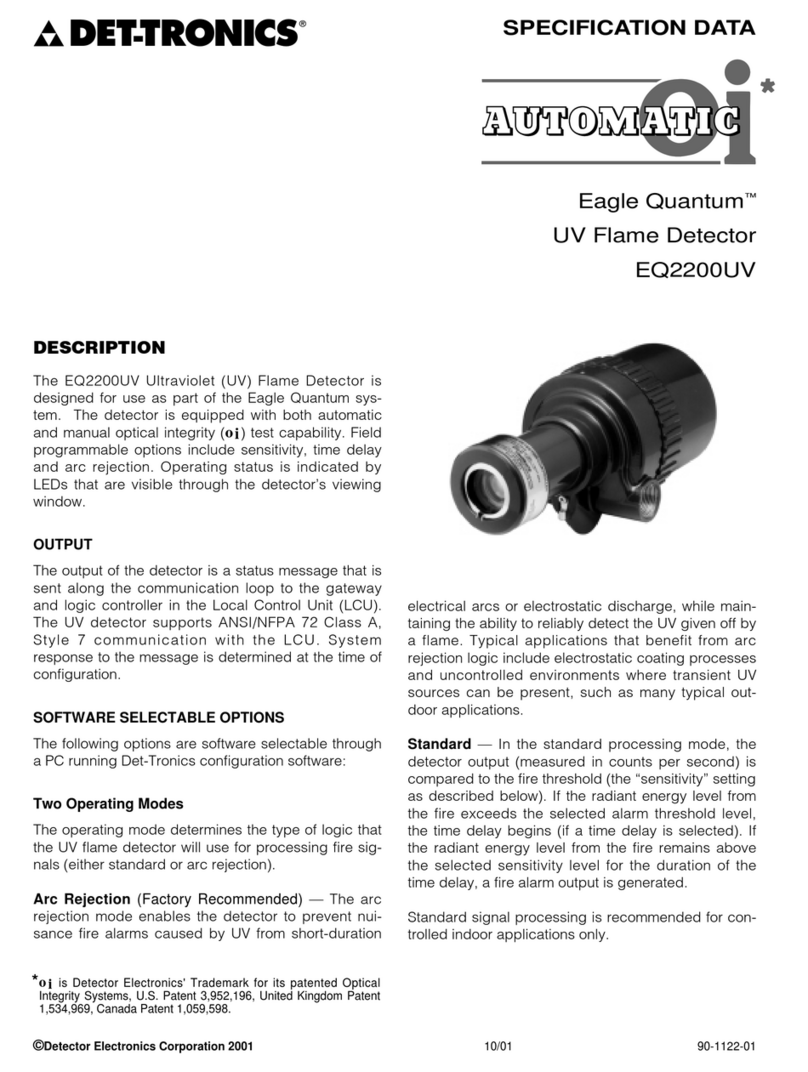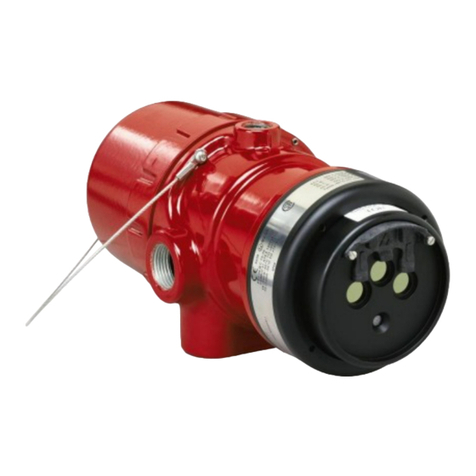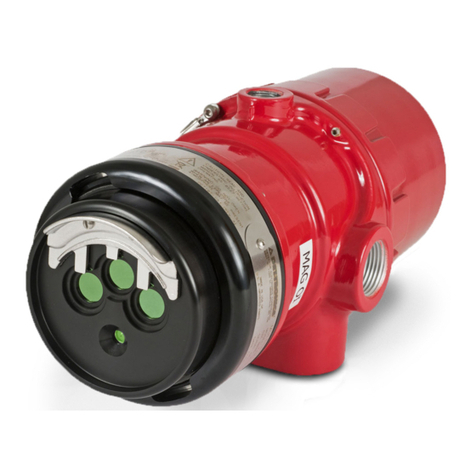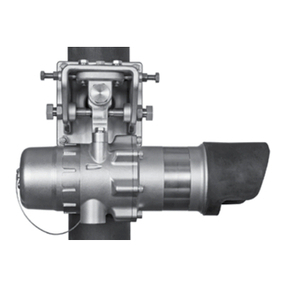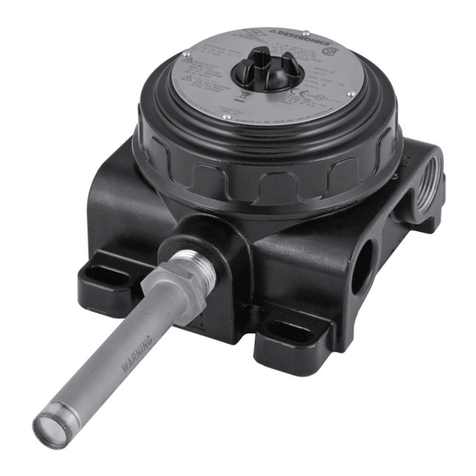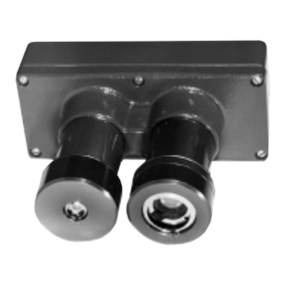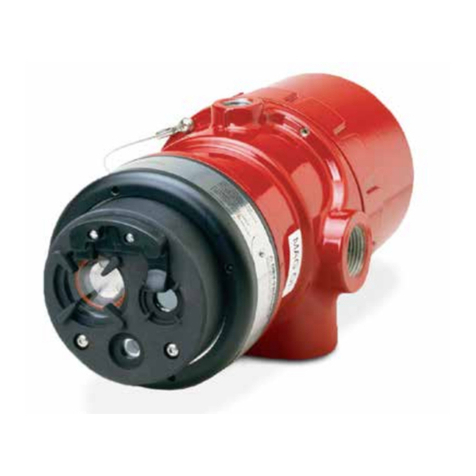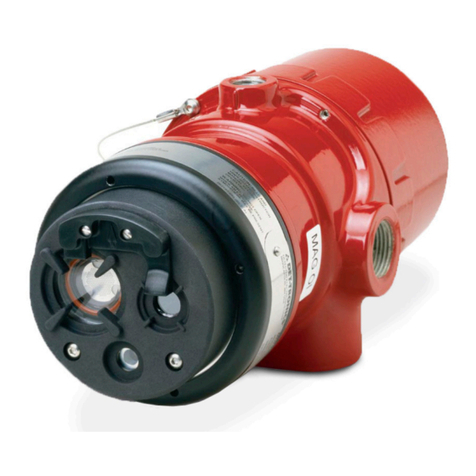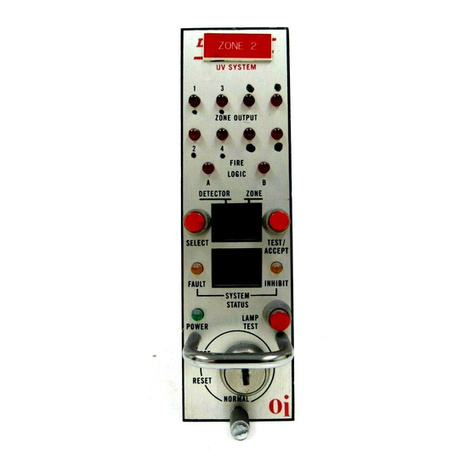DATA LOGGING
Data logging capability is also provided. Status
conditions such as normal, power down, general and oi
faults, pre-alarm, fire alarm, time and temperature are
recorded. Each event is time and date stamped, along
with the temperature and input voltage. Event data is
stored in non-volatile memory when the event becomes
active, and again when the status changes. Data is
accessible using the RS-485 port.
INTEGRAL WIRING COMPARTMENT
All external wiring to the device is connected within the
integral junction box. The screw terminals accept wiring
from 12 to 22 AWG. The detector is furnished with four
conduit entries, with either 3/4 inch NPT or 25 mm
threads.
GENERAL APPLICATION
INFORMATION
RESPONSE CHARACTERISTICS
Response is dependent on distance, type of fuel,
temperature of the fuel, and time required for the fire to
come to equilibrium. As with all fire tests, results must
be interpreted according to an individual application.
See Appendix A for fire test results.
IMPORTANT APPLICATION CONSIDERATIONS
In applying any type of sensing device as a fire
detector, it is important to know of any conditions that
can prevent the device from responding to fire, and also
to know what other sources besides fire can cause the
device to respond.
Welding
Arc welding should not be performed within 40 feet of
the very high sensitivity detector (10 feet for medium
sensitivity detector). It is recommended that the system
be bypassed during welding operations in situations
where the possibility of a false alarm cannot be
tolerated. Gas welding mandates system bypass, since
the gas torch is an actual fire. Arc welding rods can
contain organic binder materials in the flux that burn
during the welding operation and are detectable by the
X3301. Welding rods with clay binders do not burn and
will not be detected by the X3301. However, system
bypass is always recommended, since the material
being welded may be contaminated with organic
substances (paint, oil, etc.) that will burn and possibly
trigger the X3301.
Artificial Lighting
The X3301 should not be located within 3 feet of
artificial lights. Excess heating of the detector could
occur due to heat radiating from the lights.
EMI/RFI Interference
The X3301 is resistant to interference by EMI and RFI,
and is EMC Directive compliant. It will not respond to a
5 watt walkie-talkie at distances greater than 1 foot. Do
not operate a walkie-talkie within 1 foot of the X3301.
Non-Carbon Fires
The X3301 is a multiple spectrum IR device with
detection limited to carbonaceous fuels. It should not
be used to detect fires from fuels that do not contain
carbon, such as hydrogen, sulfur and burning metals.
IMPORTANT SAFETY NOTES
WARNING
Do not open the detector assembly in a hazardous
area when power is applied. The detector contains
limited serviceable components and should never
be opened. Doing so could disturb critical optical
alignment and calibration parameters, possibly
causing serious damage. This type of damage
could be undetected and could result in failure to
see a fire and/or false alarm.
CAUTION
The wiring procedures in this manual are intended
to ensure proper functioning of the device under
normal conditions. However, because of the many
variations in wiring codes and regulations, total
compliance to these ordinances cannot be
guaranteed. Be certain that all wiring complies
with the NEC as well as all local ordinances. If in
doubt, consult the authority having jurisdiction
before wiring the system. Installation must be
done by a properly trained person.
CAUTION
To prevent unwanted actuation or alarm,
extinguishing devices must be disconnected prior
to performing detection system tests or
maintenance.
ATTENTION
Remove the protective cap from the front of the
detector before activating the system.
ATTENTION
Observe precautions for handling electrostatic
sensitive devices.
395-85284.1
